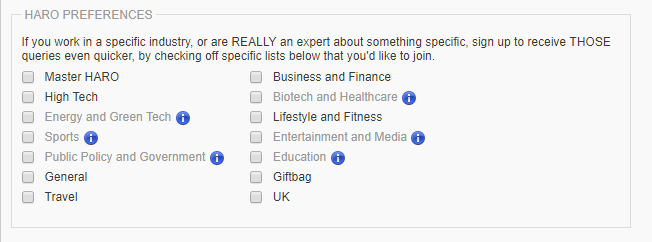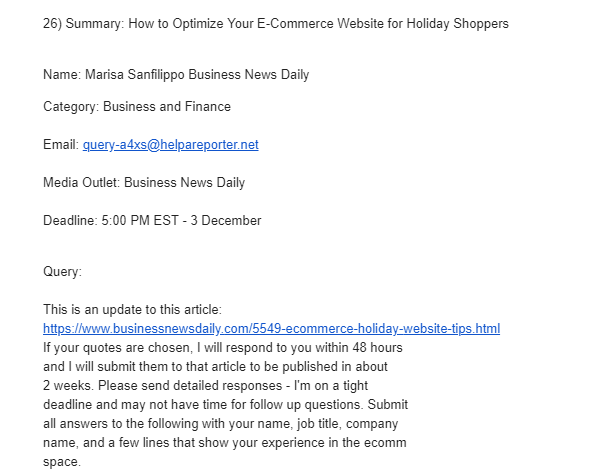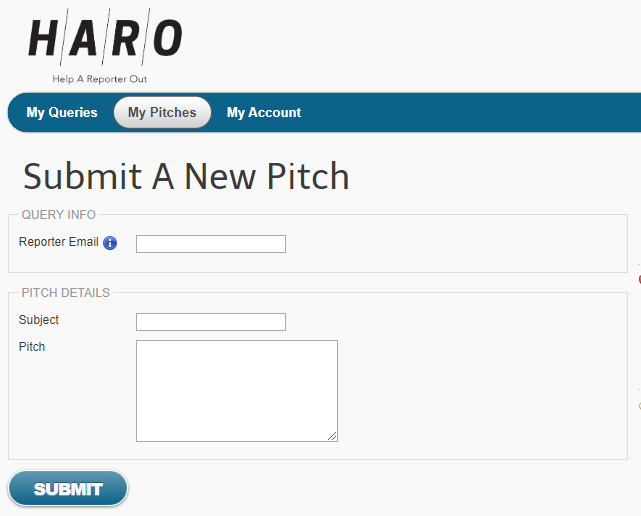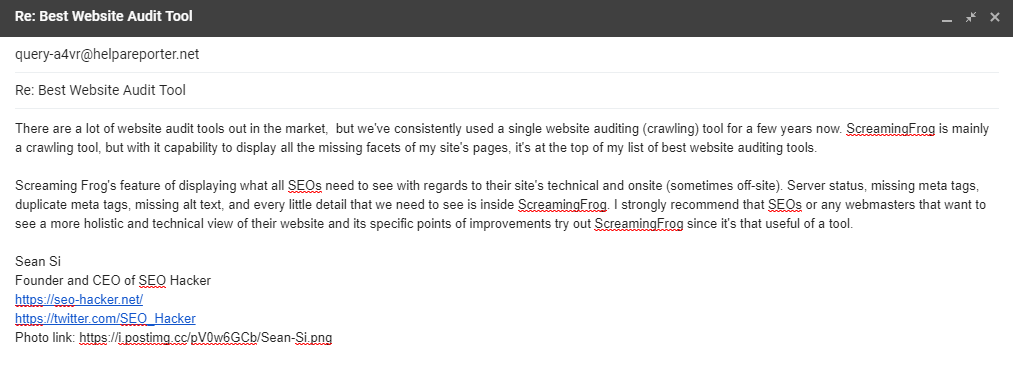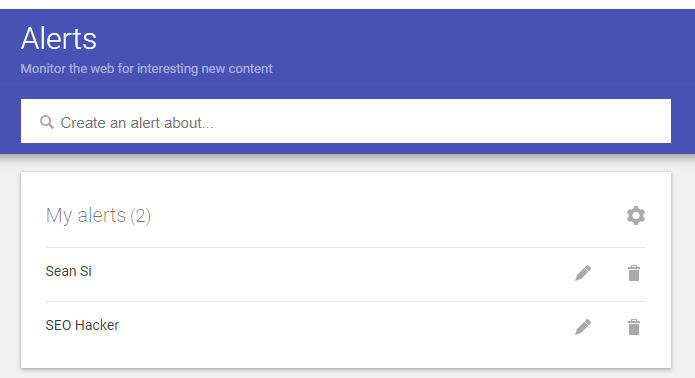The Ultimate HARO Guide for Brands and SEO
What is HARO, and why should I use it for my SEO?
Quick Answer: Help a Reporter Out or HARO is an online PR platform that is used by journalists and bloggers from popular websites to connect with sources to help out with their content. This, in turn, allows sources to get valuable media coverage from high traffic websites that are great for branding and SEO.
Overview
HARO first started out as a small Facebook group back in 2008 and has now grown to more than 800,000 sources and 55,000 verified journalists and bloggers.
For a journalist or blogger to use HARO, their website must have an Alexa ranking of one million or less. This ensures that all websites are all high-quality which means for us sources, a gold mine of opportunities.
Using HARO to build your authority online is not rocket science, or that’s what you think. The first few steps are fairly easy but it gets a lot more difficult.
- How to Create a HARO Account
- Responding to HARO queries
- How to Write the Perfect HARO pitch
- Sample HARO Pitch Template
- How do you know your answer in HARO is accepted?
- How much does HARO cost?
- SEO Benefits of HARO
- Key Takeaway
How to Create a HARO Account
1. Register as a Source
Creating an account on HARO is easy and can be done in a few steps. All you need to do is go to helpareporter.com and click on the I’m a Source button. It will redirect you to a page where you could see an overview of how HARO works. Click on “Sign Up” on the navigation bar and fill-up the form with the required details. You should receive an email a few minutes after you register to verify your account.
2. Select your HARO preferences
After verifying your account, you can now log-in. HARO’s user interface is really simple and easy to navigate. In the dashboard, you will see your account details and fill up some missing information or update your account.
If you scroll down you will see the HARO Preferences. This is where you select from what industry you want to receive queries from. If you select Master HARO, you will receive all queries from all industries. I usually select Master HARO so I could look for opportunities not only for SEO Hacker but also for our clients.
3. Receive HARO Queries Daily
Once you’ve set up your account, you will start receiving emails from HARO the next day. HARO will send you three emails: one for the morning, afternoon, and evening edition. HARO sends out these emails at 5:35 a.m., 12:35 p.m. and 5:35 p.m. Eastern Standard Time respectively.
Each email contains different queries so be sure to check each of them for opportunities.
A HARO query would look like this:
Responding to HARO Queries
Once you’ve found the perfect HARO query you can answer, here’s what you need to do.
There are two ways to send your answer to a journalist.
First is through the HARO dashboard under “My Pitches”.
The second is by sending a direct email to the Reporter email.
You can do either way but I prefer sending an email directly. The process is pretty similar. You copy and paste the Reporter’s anonymous email indicated in the query. And send your pitch! Whether you sent your pitch through direct email or the HARO dashboard, you could see all your pass pitches in your account.
How to Write the Perfect HARO Pitch
Now that we got the easy part out of the way, let’s now go to the difficult part: writing the perfect HARO pitch. Here are some tips:
1. Be concise and straight-forward
The reason why reporters and bloggers use this platform is to save time and if you waste their time by fluffing to give a long answer, your pitch will most likely go to the trash.
The key to answering HARO queries is to give as much information in the shortest answer possible. The safest length would be one to three paragraphs per pitch. Answer the question directly.
Journalists don’t have the time to read a 500-word answer. But of course, it would depend on the query. There will be some queries that have a minimum word count for the answer or the other way around. Try to mix and match your style of answering and see what would work best for you.
Here’s another tip: some of the HARO queries will have the website of the reporter shown. So if you want to know what’s the best way to answer a query, you could check out their site first and take a look at the previous posts that may come from HARO. An easy way to find them is by looking for roundup posts.
2. Mind the deadline
A lot of the people I see doing HARO is that they overlook the deadline journalists set. There is not really the best time to answer a query. Some reporters are active while some will check queries after the deadline.I usually send my pitches a few hours before the deadline but as I mentioned, it’s really a mix and match to look for what would work for you.
3. Do your research
If you’re answering HARO queries for the field you are expert in, that’s great and it’s much easier for you. But for others who are doing it for SEO for their clients or PR of their company, you would need to do your research to give a well-thought answer.
4. Make your background short and sweet
When sending a HARO pitch, make sure you give reporters a good idea of who you are and your expertise by providing a brief background of your experience and what you do. You could either add this at the beginning of your pitch or add a short bio at the end.
5. Include personal details and links
This is the reward that we get by helping these journalists and bloggers with their content. Reporters will most likely include a mention of your name, company, and link to your website if your answer is accepted. Make sure that you place your personal details such as your full name, email address, company name, website link, and social media links preferably Linkedin.
6. Include a link to your professional photo
Some websites will require this but some will not. It is always a good idea to include a link to your photo that they could use to display in the article. Take note that adding a photo as an attachment will not work on HARO so you have to use image hosting sites or a google drive link.
7. Don’t Sell
Unless the query is specifically about your story or your company, do not sell. HARO pitches are not sales pitches. Reporters are looking for information, not to hire your company or promote it on their website.
Sample HARO Pitch Template
Here’s a sample of a pitch I sent to a query asking for the best website auditing tools:
To: query-a4vr@helpareporter.net
Subject: Re: Best Website Audit Tool
There are a lot of website audit tools out in the market, but we’ve consistently used a single website auditing (crawling) tool for a few years now. ScreamingFrog is mainly a crawling tool, but with its capability to display all the missing facets of my site’s pages, it’s at the top of my list of best website auditing tools.
ScreamingFrog’s feature of displaying what all SEOs need to see with regards to their site’s technical and onsite (sometimes off-site). Server status, missing meta tags, duplicate meta tags, missing alt text, and every little detail that we need to see is inside ScreamingFrog. I strongly recommend that SEOs or any webmasters that want to see a more holistic and technical view of their website and its specific points of improvement try out ScreamingFrog since it’s that useful of a tool.
Sean Si
Founder and CEO of SEO Hacker
https://twitter.com/SEO_Hacker
Photo link: https://i.postimg.cc/pV0w6GCb/Sean-Si.png
How do you know your answer in HARO is accepted?
After answering a query, most HARO answers would take weeks or months before it gets published. Some webmasters would send you emails that your answer has been accepted and ask you to promote the post when the post gets live. While some webmasters will not notify you at all. Here are two other ways to track your HARO answers.
1. My Pitches tab in HARO
This is the least reliable one as rarely use this to confirm that an answer will be used. Inside the HARO dashboard, go to the “My Pitches” tab and you will see the list of the previous pitches you’ve sent and their status is indicated beside it.
2. Google Alerts
As mentioned, there will be times you won’t be notified at all and another way to monitor your HARO pitches would be to set up Google Alerts. Journalists will always use your name or company’s name to credit you for the answer. All you have to do is open up Google Alerts and create an alert on your name and company. Google will send you updates once it sees that a website has a mention of your name.
How much does HARO cost?
The basic use of HARO is free for both Journalists and Sources. However, HARO offers three paid plans for additional features:
Free Plan
- Media opportunities sent to inbox three times a day
- Email Support
Standard Plan $19 per month
- Everything in the Basic Plan
- One keyword alert that allows you to filter queries
- One profile to be inserted in the pitches
- Text Alerts
- Online Search
Advanced Plan $49 per month
- Everything in the basic and standard plan
- Three keywords to filter queries
- Three profiles
- Head start: get HARO alerts as soon as they get approved by the HARO editorial team
Premium Plan $149 per month
- Everything in basic, standard, and advanced plan
- Unlimited keywords
- Unlimited profiles
- Phone and email support
SEO Benefits of HARO
Since HARO allows you to connect with webmasters from high-authority websites, this is a gold mine of opportunity for getting high-quality links and referral traffic. This is arguably one of the best ways to get natural backlinks. But do take note that not all websites will give out dofollow links and some won’t even give links and just mention your name.
The sample pitch template that I showed above was my answer to a query by Blurbpoint regarding the Best SEO Auditing Tools. Not only was my name mentioned but I also got a link back to the SEO-Hacker website and Twitter account.
It might take a long time to get your answers published but SEO is a long game anyway. I highly recommend that you take at least 30 minutes a day to sift through HARO emails and look for queries you can answer. While your answers are not guaranteed to be accepted, it is always a win when your answers get approved. You get a link from a website that is ranked at least 1 million in the Alexa Rankings. That’s really the only reward you need. And knowing these websites have good traffic flow, referral traffic is just a bonus.
Key Takeaway
What I love the most about HARO is the thought that instead of reaching out to these high authority websites, they are the ones who lay down the questions for us to answer. You get all these opportunities every day without having to pay. All you have to do is send out the best pitch that you can. But, you have to remember that these journalists and bloggers receive thousands of answers daily so you have to make each answer count.
Needless to say, it is a great way to get online publicity boosting your branding, authority, and of course SEO. It doesn’t matter whether your company is just starting out. The person with the best pitch wins.


